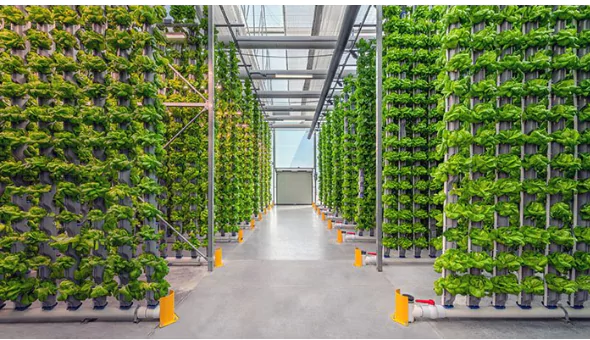Share this link via
Or copy link
Hydroponics, the practice of growing plants without soil, has become a cornerstone of modern agriculture and urban farming. As precision agriculture and urban farming continue to evolve, innovations are reshaping the way we approach cultivation.
From advanced nutrient delivery systems to sustainability-focused designs, the future of hydroponics holds promise for efficiency, scalability, and environmental stewardship. In this article, we explore the trends poised to revolutionize hydroponics, focusing on nutrient protocols, advanced systems, precision equipment, and automation.
At its core, hydroponics is a method of growing plants in nutrient-rich water solutions. Unlike traditional soil-based agriculture, hydroponics provides plants with water, nutrients, and oxygen directly at their roots. Systems such as Nutrient Film Technique (NFT) and Deep Water Culture (DWC) exemplify this approach, ensuring optimal conditions for growth. These systems are not just efficient but also adaptable, enabling growers to maximize space and resources while reducing waste.

Nutrient Blends Tailored to Each Plant Stage: Precision in nutrient delivery is becoming paramount. Tailored feeding protocols, designed to meet the specific needs of plants at various growth stages, are emerging as a game-changer. By fine-tuning nutrient blends for seedling, vegetative, and flowering stages, growers can optimize plant health and productivity. These advancements minimize nutrient waste, ensure consistent growth, and enhance the quality of the final yield.
Advanced Hydroponic Systems with Resource Efficiency: Innovative systems like Recirculating Deep Water Culture (RDWC) are leading the way in resource-efficient hydroponics. These setups use significantly less water and nutrients by recycling them within the system. RDWC systems not only reduce operational costs but also minimize environmental impact, making them ideal for sustainable farming initiatives. With enhanced oxygenation and nutrient uptake, these systems are setting new standards for high-yield hydroponics.
Integration of Precision Agriculture Equipment The adoption of precision tools like LED grow lights, advanced water filtration systems, and environmental sensors is transforming hydroponics. LED lights tailored to specific plant spectrums boost photosynthesis while reducing energy consumption. Water filtration systems ensure optimal water quality, critical for maintaining nutrient balance and plant health. Sensors for temperature, humidity, and pH provide real-time data, enabling growers to make informed decisions and maintain ideal growing conditions.
Dosing Automation and pH Control: A Game-Changer
Why It’s Needed
Manual nutrient mixing and pH adjustments are time-consuming, prone to human error, and inconsistent. These challenges limit scalability and often lead to suboptimal plant health.
How Automation Helps
Automated pH controller revolutionizes nutrient management by ensuring precise dosing and real-time pH adjustments. Systems like Growee’s integrate advanced algorithms and cloud connectivity to monitor and adjust nutrient levels automatically. This technology ensures consistency, reduces labor requirements, and supports scalability, allowing growers to focus on other aspects of farming.
Growee exemplifies the next generation of hydroponics technology. Its dosing automation systems rely on precise algorithms, real-time monitoring, and cloud integration to deliver consistent and reliable nutrient and pH management. By minimizing human error and optimizing resource usage, Growee enables growers to scale their operations efficiently while ensuring plant health and yield quality.
Hydroponics is inherently resource-efficient, using up to 90% less water than traditional agriculture. Future developments focus on closed-loop systems that recycle water and nutrients, further reducing waste. Energy-efficient technologies like LEDs and automation tools align with the growing demand for sustainable farming practices. As climate change and resource scarcity intensify, hydroponics offers a viable solution for feeding a growing population.
The future of hydroponics lies in innovation and sustainability. From tailored nutrient protocols to advanced automation, the industry is transforming how we grow food. Dosing automation, in particular, stands out as a revolutionary trend, offering precise control over nutrients and pH while reducing labour and waste. Growee’s cutting-edge solutions position it as a leader in this space, making hydroponics more efficient, scalable, and sustainable.
As technology advances, hydroponics will play a crucial role in sustainable urban farming, ensuring efficient and scalable solutions to meet global food demands. Growers who embrace these trends will not only enhance productivity but also contribute to a more sustainable and resilient agricultural future.